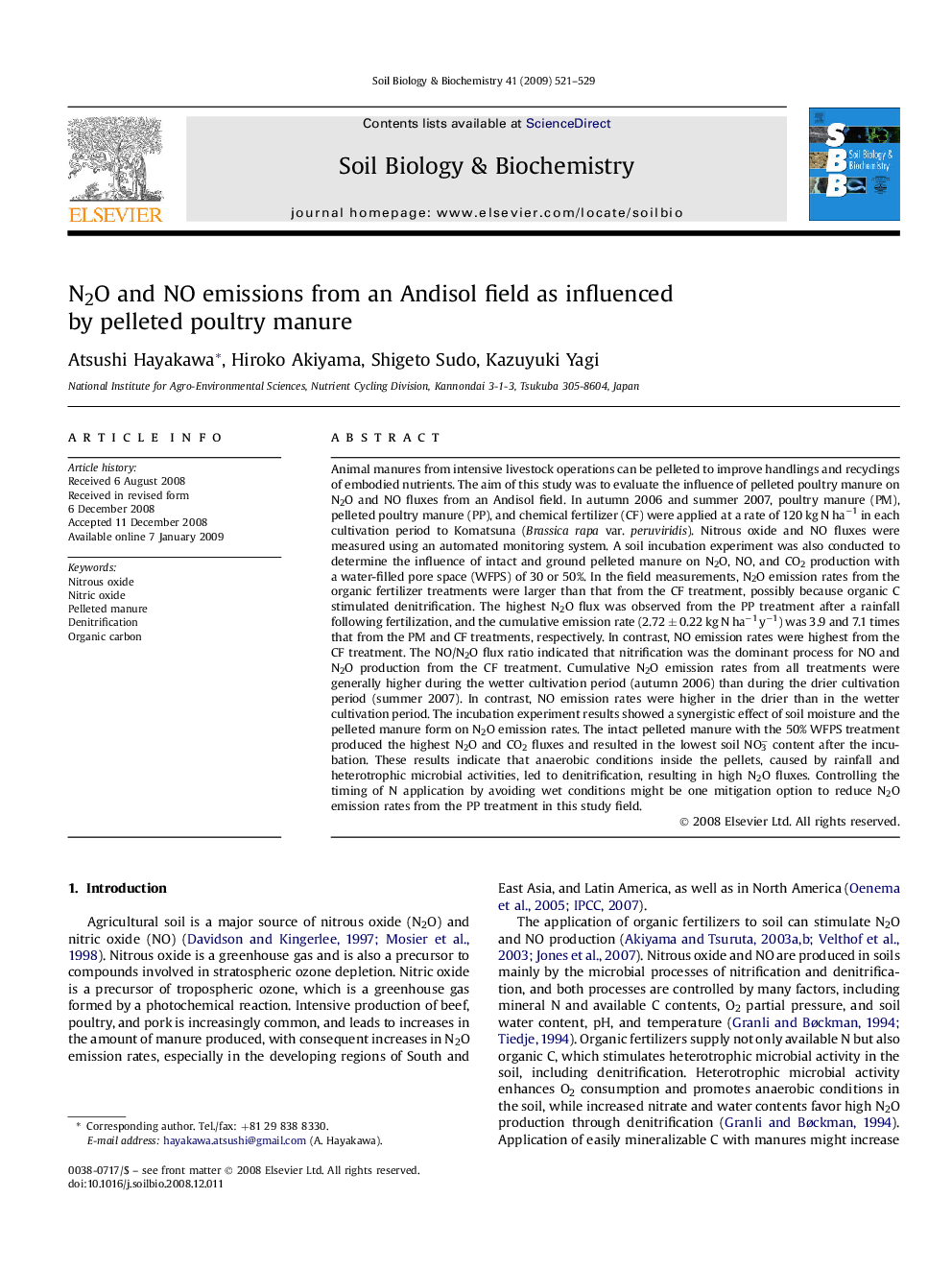| Article ID | Journal | Published Year | Pages | File Type |
|---|---|---|---|---|
| 2026723 | Soil Biology and Biochemistry | 2009 | 9 Pages |
Animal manures from intensive livestock operations can be pelleted to improve handlings and recyclings of embodied nutrients. The aim of this study was to evaluate the influence of pelleted poultry manure on N2O and NO fluxes from an Andisol field. In autumn 2006 and summer 2007, poultry manure (PM), pelleted poultry manure (PP), and chemical fertilizer (CF) were applied at a rate of 120 kg N ha−1 in each cultivation period to Komatsuna (Brassica rapa var. peruviridis). Nitrous oxide and NO fluxes were measured using an automated monitoring system. A soil incubation experiment was also conducted to determine the influence of intact and ground pelleted manure on N2O, NO, and CO2 production with a water-filled pore space (WFPS) of 30 or 50%. In the field measurements, N2O emission rates from the organic fertilizer treatments were larger than that from the CF treatment, possibly because organic C stimulated denitrification. The highest N2O flux was observed from the PP treatment after a rainfall following fertilization, and the cumulative emission rate (2.72 ± 0.22 kg N ha−1 y−1) was 3.9 and 7.1 times that from the PM and CF treatments, respectively. In contrast, NO emission rates were highest from the CF treatment. The NO/N2O flux ratio indicated that nitrification was the dominant process for NO and N2O production from the CF treatment. Cumulative N2O emission rates from all treatments were generally higher during the wetter cultivation period (autumn 2006) than during the drier cultivation period (summer 2007). In contrast, NO emission rates were higher in the drier than in the wetter cultivation period. The incubation experiment results showed a synergistic effect of soil moisture and the pelleted manure form on N2O emission rates. The intact pelleted manure with the 50% WFPS treatment produced the highest N2O and CO2 fluxes and resulted in the lowest soil NO3− content after the incubation. These results indicate that anaerobic conditions inside the pellets, caused by rainfall and heterotrophic microbial activities, led to denitrification, resulting in high N2O fluxes. Controlling the timing of N application by avoiding wet conditions might be one mitigation option to reduce N2O emission rates from the PP treatment in this study field.
